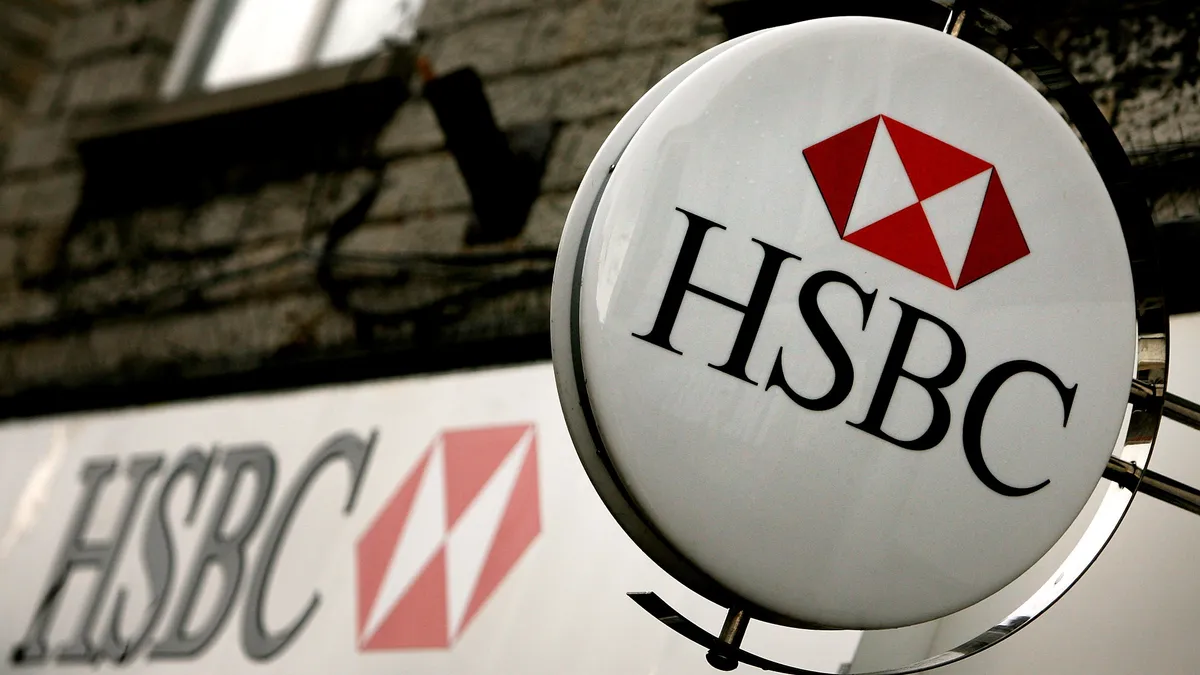Dive Brief:
- HSBC agreed Wednesday to sell 80 of its 148 U.S. branches to Providence, Rhode Island-based Citizens Bank, and 10 West Coast branches to Los Angeles-based Cathay Bank.
- HSBC will retain and repurpose 20 to 25 locations as international wealth centers for its mostly Asia-based private-banking and wealth-management customers, the bank said in a statement. It will close the remaining 35 to 40 locations.
- Wednesday’s move marks an exit by Europe’s largest lender from mass-market retail banking in the U.S., capping months of speculation as to the fate of HSBC’s stateside network. The bank confirmed in February that it was "exploring organic and inorganic options" for its U.S. retail branches — a strategy rumored as far back as November.
Dive Insight:
Pending regulatory approval, the deals with Citizens and Cathay are expected to close by the first quarter of 2022.
The acquisition is slated to give Citizens Bank 800,000 new customer relationships and a foothold in several strategic markets, including the New York City area — home to 66 of Citizens’ 80 new branches — as well as Southeast Florida and Washington, D.C.
"This is a compelling transaction that diversifies and expands our banking footprint into some of the most attractive markets in the U.S.," Brendan Coughlin, Citizens Bank’s head of consumer banking, said in a statement Wednesday.
Although a number of 2021’s banking mergers and acquisitions have centered on the Boston market, this one features New England’s largest bank — which already has a sizable presence in that city — pushing outward.
Citizens CEO Bruce Van Saun said the HSBC deal will act as a "springboard" toward national expansion. Through the tie-up, Citizens will add $9.2 billion in deposits and $2.2 billion in outstanding loans.
Cathay Bank stands to pick up about 50,000 customers, along with the roughly $1 billion in deposits and $800 million in loans it is acquiring from HSBC.
"This transaction will broaden the reach of our Northern and Southern California branch network," said Dunson Cheng, executive chairman of Cathay Bank’s parent company. "The ability to provide our clients added ease in accessing banking services is a significant step in our journey."
For HSBC, Wednesday’s moves solidify a pivot toward Asia and the bank’s richest clients, which the lender laid out in February in a plan to spend an additional $6 billion over the next five years to expand in Hong Kong, China and Singapore. The bank is pouring more than half of that into growing its wealth business, which is expected to hire more than 5,000 new advisers.
In the U.S., that means the bank will trim its customer base from about 1.4 million to roughly 300,000, and stop servicing customers with account balances under $75,000, and businesses with $5 million or less in turnover.
"They are good businesses, but we lacked the scale to compete," HSBC CEO Noel Quinn said. However, he added, the U.S. is "an important contributor to our growth plans."
The bank is nearly halfway, by time frame, into a three-year effort to cut $100 billion in assets and about 35,000 jobs. HSBC said it expects to incur $100 million in pretax costs connected to Wednesday’s deals, but otherwise they wouldn’t generate a "significant gain or loss."
The U.S. is not the only international market from which HSBC is retreating. The bank’s French retail unit, encompassing 230 branches as of 2020, has been on sale for more than a year. Private-equity firm Cerberus Capital Management stands as the last candidate to acquire it, Bloomberg reported.
HSBC isn’t the first foreign bank in recent months to sell off or wind down its U.S. presence. Spanish lender BBVA announced in November it would sell its U.S. retail arm to PNC for $11.6 billion. HSBC’s brick-and-mortar footprint is less than a quarter of BBVA’s 640-branch U.S. network, yet the 20 to 25 locations HSBC is retaining far exceeds the single location BBVA will hold after its PNC deal closes.
"Our refreshed strategy in the U.S. will allow us to better serve the needs of our international wealth clients, who continue to consider the US for international education, property, investment diversification, career and family mobility and business expansion, among others," said Greg Hingston, HSBC’s head of wealth and personal banking for Asia Pacific.
Wednesday’s moves cap a long, slow divestment of HSBC’s U.S. presence that first ramped up in 1980, when the London lender bought a controlling interest in Buffalo, New York-based Marine Midland Bank. As recently as 2011, the bank counted 461 U.S. branches, according to The Wall Street Journal. But it sold 195 of those branches later that year to First Niagara Bank, and sold its credit-card business to Capital One. (KeyBank, in turn, bought First Niagara in 2016.)
HSBC closed 79 of its U.S. branches in the first half of 2020.














